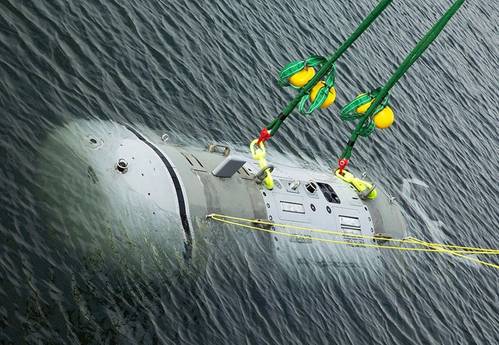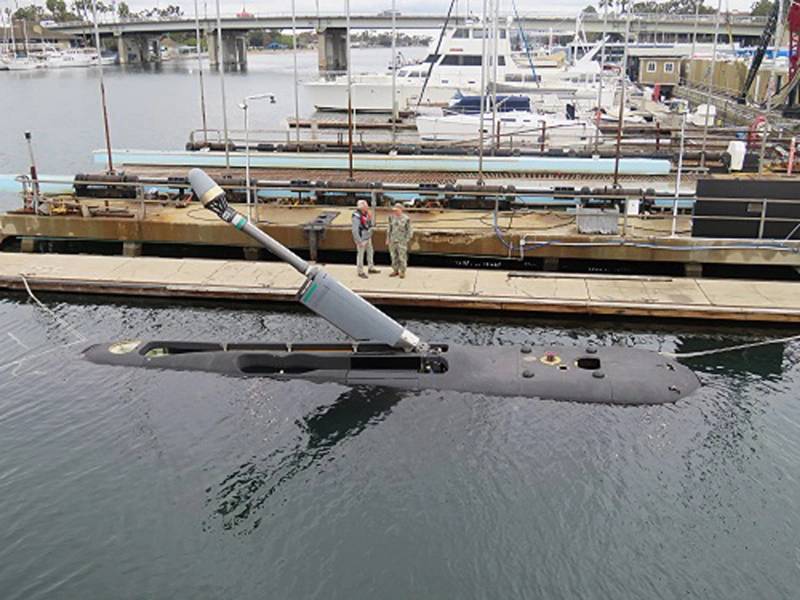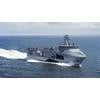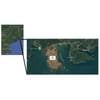Navy Signals Need for New Large AUV Class

Snakehead is a modular, reconfigurable, multi-mission underwater vehicle deployed from submarine large ocean interfaces, with a government-owned architecture, mission autonomy and vehicle software. Photo by Richard Allen, Naval Undersea Warfare Center Division Newport
The Defense Innovation Unit of the Pentagon has issued a call under the Project Description "CAMP – Combat Autonomous Maritime Platform" for deploying large payloads across extended ranges. According to the solicitaion, "current UUV capabilities present limitations in range and payload capacity, hindering the effective deployment of critical resources in certain operational scenarios."
"CAMP" is a project dedicated to the late Richard “Mike” Camp, former Director of Warfare Systems, U.S. Pacific Fleet. Mike Camp was a highly accomplished former career submarine officer and a tireless proponent for the adoption of large uncrewed undersea vehicles (UUVs) into the Fleet.
Today, the he largest UUVs are the Boeing XLUUV and Snakehead LDUUV. The Navy accepted delivery its first Extra Large Unmanned Undersea Vehicle (XLUUV) Test Asset System in December 2023. The Boeing Orca XLUUV, designated XLE0, from the manufacturer Boeing.
The Orca XLUUV is a cutting-edge, autonomous, unmanned diesel-electric submarine with a modular payload section to execute a variety of missions critical to enhancing the Navy’s undersea prowess. Configured to accommodate various payloads, the Orca XLUUV allows for the seamless integration of sensors, communication systems, and other mission-specific components, adapting to the evolving requirements of naval operations. With its long-endurance capability, the Orca XLUUV can operate autonomously for extended periods. This allows for sustained operational presence and increased mission effectiveness in challenging undersea environments.
Orca is based on the Boeing Echo Voyager XLUUV. Like Echo Voyageur, Orca is 51-feet long, but features modular construction to allow for the insertion of an additional 34-foot payload module.
 Orca Extra Large Unmanned Undersea Test Vehicle.
Orca Extra Large Unmanned Undersea Test Vehicle.
Source: US Navy program office via Boeing press release
Also in the large category, the Snakehead is a tube-shaped UUV, about four feet in diameter and eight feet long. The Navy refers to it as a “modular, reconfigurable, multi-mission underwater vehicle deployed from submarine large ocean interfaces, with a government-owned architecture, mission autonomy and vehicle software.” The preliminary design was done by Naval Undersea Warfare Center at Newport, and the plan was to hand off construction to a competitively-awarded prime contractor. The first Snakehead was “christened” at NUWC Newport in September 2022, but the program is on hold for the time being.
Specifically, the DoD seeks commercially available, demonstration-ready uncrewed systems that address these limitations, offering a scalable and cost-effective solution for long-range, high-capacity payload deployment.
Desired mission sets include, but are not limited to:
● Emplacement of various sized payloads
● Bathymetric surveys and mapping
● Intelligence, surveillance and reconnaissance
● Communications across the air/water interface (acoustic and Radio Frequency)
● Ability to operate in a GPS denied environment
Desired Solution Attributes
A candidate platform should have some or all of the following characteristics:
● Exceptional range, capable of transits greater than 1000nm.
● Capable of performing deeper than 200m underwater.
● Modular payload capacity with ability to drop various payloads to the seafloor. Payload sizes include but are not limited to:
○ 5ft long, 19 inches in diameter
○ 21ft in length and 21 inches in diameter
● Autonomous operation including navigation, guidance, and obstacle/collision avoidance (including during emergence and at surface), as well as remote operation.
● Capability for RF communications, and capability or demonstrate a pathway for undersea communications.
● Modularity, including the ability to switch from different payloads and mission sets.
● Hardware and software architecture with open interfaces, with a demonstrable pathway to integrate with various third party payloads;
● Demonstrable pathway to integrate with third party control systems, including but not limited to government furnished common control system (CCS).
● Demonstrable pathway for UMAA compliance.
● Demonstrable pathway to prevent, mitigate, and recover from the effects of tampering or cyber events to achieve an Authorization To Operate in alignment with applicable Committee on National Security Systems (CNSS) recommendations for minimum standards for unmanned national security systems (NSS).
● Be transportable, deployable, and recoverable with commonly available commercial freight and transportation equipment, or demonstrate a development pathway to achieve this.
● Minimize surface expression and duration.
● Include modeling and simulation to inform specific vehicle behaviors and mission operations, or ability to integrate with 3rd party modeling and simulation solutions.
Read the full solicitation here.














 December 2025
December 2025



